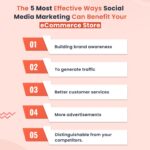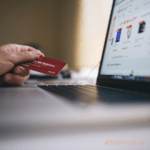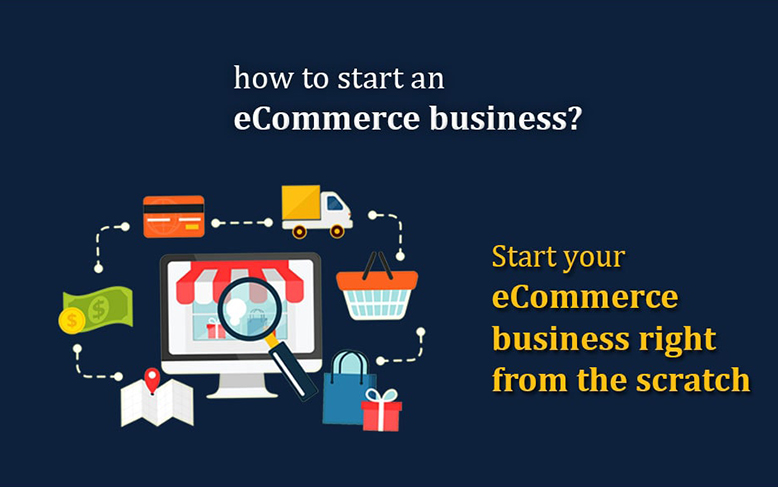Steps to start an e-commerce business from scratch
While starting an e-commerce business, the initial thing you need is an e-commerce business idea. Put the limitations aside and think with an open mind about the product or service you want to sell. Once you are set on the idea, you will research the market, the target audience, and the concept, to build a business plan: the outline for your business from an economic perspective.
You can then register the company, design its identity, develop your product. Set up the production and packaging, set up your online store and find the right storage and fulfilment solution. Finally, you launch your sales and marketing.
1: Produce e-commerce business ideas
Many things depend on your e-commerce business idea, and it is the primary thing to define. If you are thinking about setting up an online business, you may already have e-commerce business ideas. Ideas can be quite simple or very complex.
They can require a lot of preparation or none. The easier it is, the more competition you are expected to have. The harder it is, the more you will need to invest. A good business idea is one that transforms into a profitable business.
2: Market research & preparation
For some people, getting ideas is easy, for others it is hard. Once you have found the idea for your business, you need to test it and refine it. For that, your first step is market research and feasibility studies.
The goal is to identify the size and characteristics of the market for your product. Is there a market for your product idea? Can the product be produced? You should also project your business into the future. What will be the product life cycle, and are there any sort of risks or time constraints related to your product!
3: Make a business plan
The step which is most feared: the business plan. A business plan defines the quantitative dimension of the company and will help you focus on value and pitfalls to avoid so that you can set up a profitable online store. Nevertheless, a business plan can have many forms and many levels of depth. It does not have to be a painful exercise.
4: Company registration
To get in business, you will have to register a company at some point. On one hand, the company should carry the costs you engage in the process of creation, and on the other hand, it costs money to set up and run a business. Once you have the business plan in your hand, you are ready to register a company.
5: Design company identity
As part of the product idea in step 1, you probably already have ideas for branding, logo, and name for your store. The aim of this step is to build those elements into company assets. It is a good idea to get design help from specialists.
You can keep the cost low by using online platforms like Upwork, 99designs or Fiverr, but you will spend less time with someone you can meet face to face and exchange ideas with.
6: Product development
Product development and design can go hand in hand. Depending on the type of product, there may be more or fewer steps in your product development process. What is essential is that you have your finished product at the end of it.
7: Manufacturing and packaging
For a physical product and with your prototype in hand, you are ready to set up manufacturing. You will find more outsourcing opportunities than you would imagine, and the first decision to make is whether you will establish your own production, which is time-consuming and capital intensive, or whether you will outsource parts of or the entire process. You can contemplate packaging as an extension of the manufacturing process.
8: Set up your online store
You now have everything you need to set up your online store on an e-commerce platform. Pick your platform and start setting up your store by adding the product, designing the storefront, connecting the payment solution with your company, and entering stock information. The best online store builders will guide you through the entire process.
9: Storage, logistics, fulfilment, and customer service
For a physical product that you manufacture, storage becomes a crucial challenge. You may need to simulate your entire supply chain and know your inventory turnover to define the size of your storage needs.
Products that are manufactured and shipped on demand will not need to worry about storage, and you can move right away to the fulfilment challenge of transporting and delivering the sold product to the buyer.
At this stage, you need to consider your customer service options. Your customer service needs to be able to pilot fulfilment, make changes to deliveries, and inform the client.
10: Sales and marketing
With the manufacture and supply chain now in place, you can now launch your online store and start marketing your e-commerce activity. After much time is spent on evolving your idea, perfecting your product and obtaining solutions for supplying the product to customers, you will have the feeling that the most crucial piece of the work has been done. But that is not entirely true. Your most important challenge might be to sell the product, and you are the best person to do it.
Firstly, define your sales and marketing channels and build as much visibility & reach as possible without advertising, as a soft launch. Then build a launch campaign for your business and find profitable sales and marketing channels for your product. You will certainly try and test marketing approaches that do not work. Collect data and learn from every campaign and every initiative you do. So, that if an investment does not pay off in monetary terms, you will have learned from the experience and do better in your next campaign.






